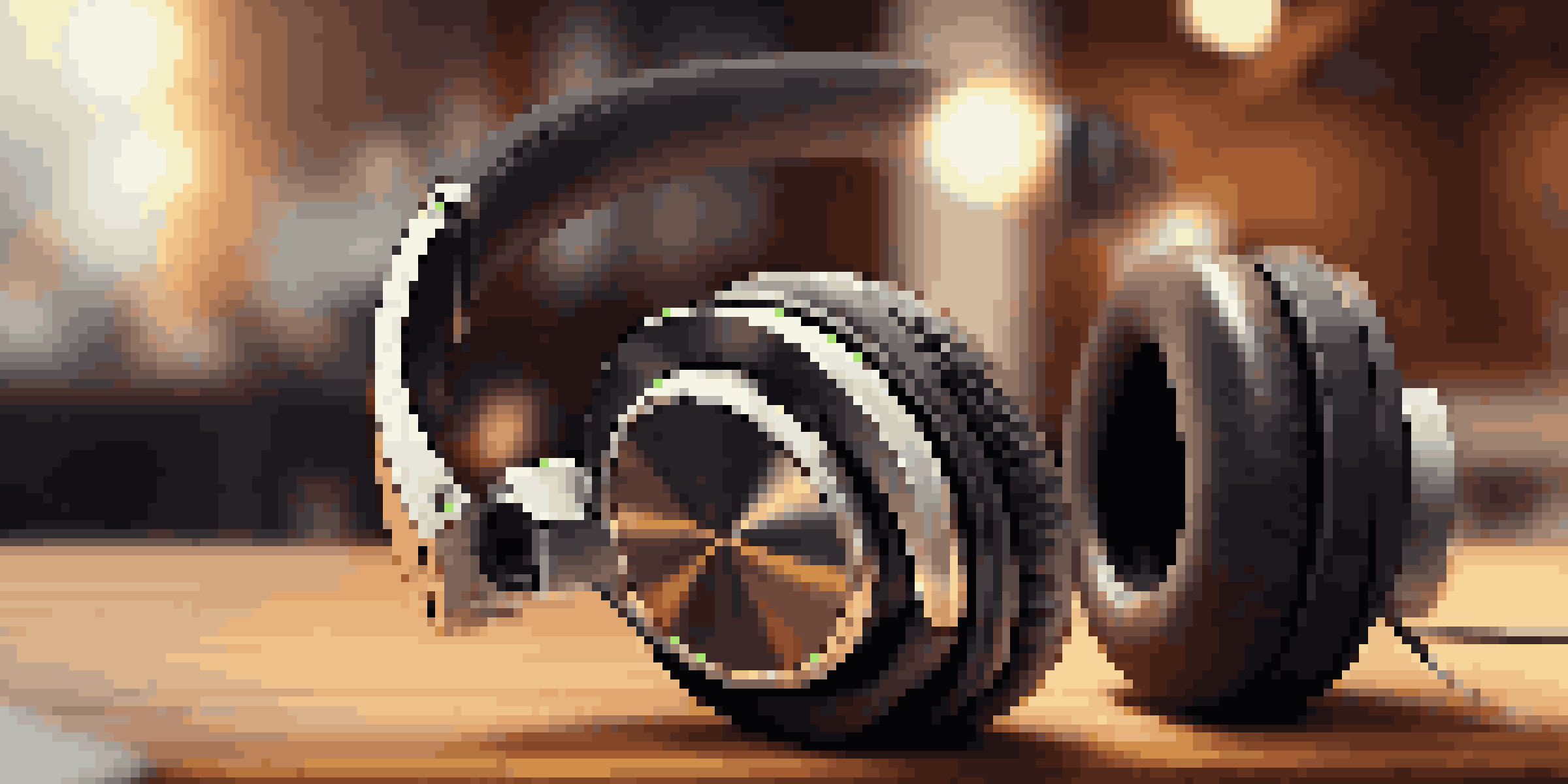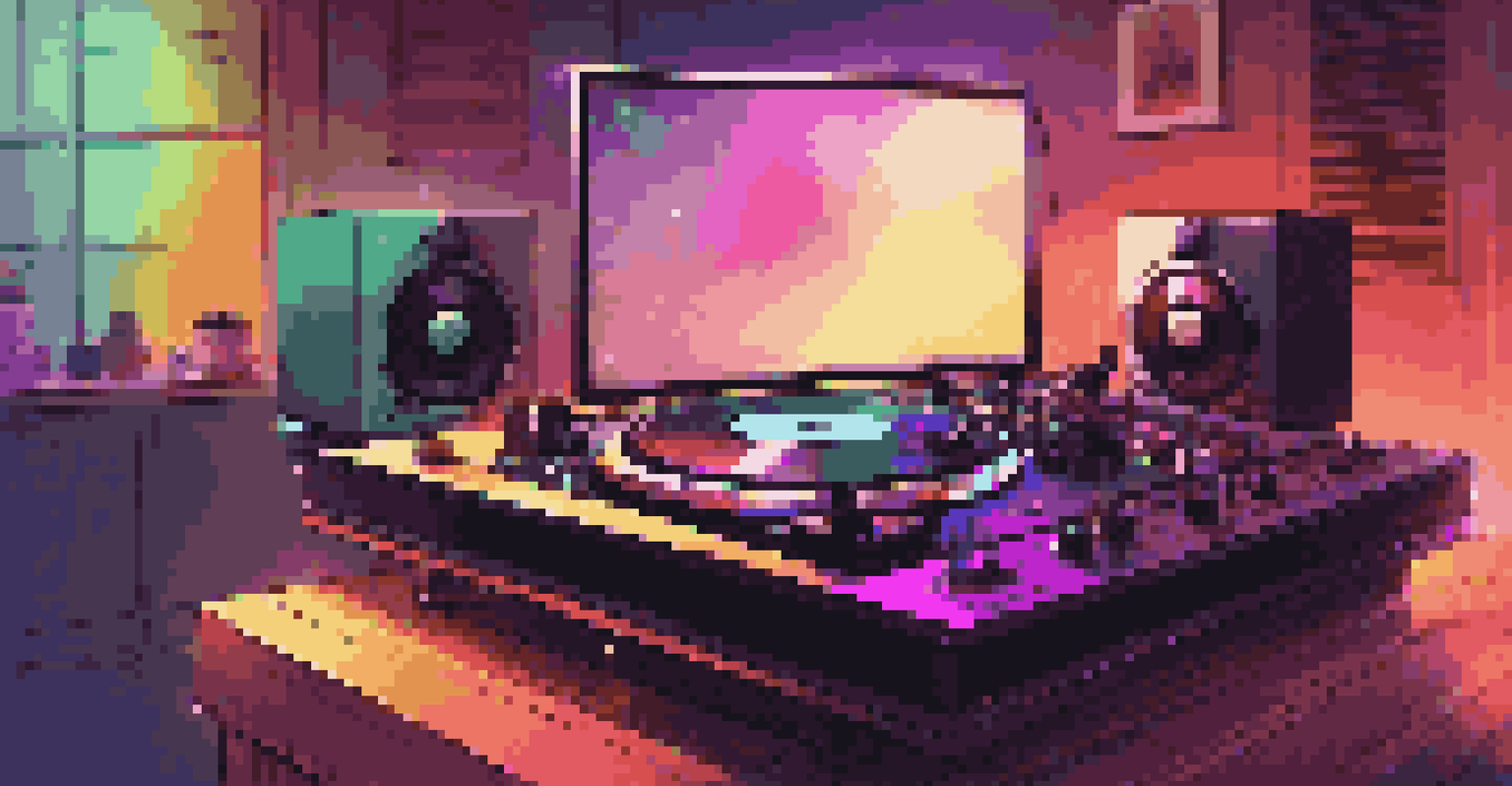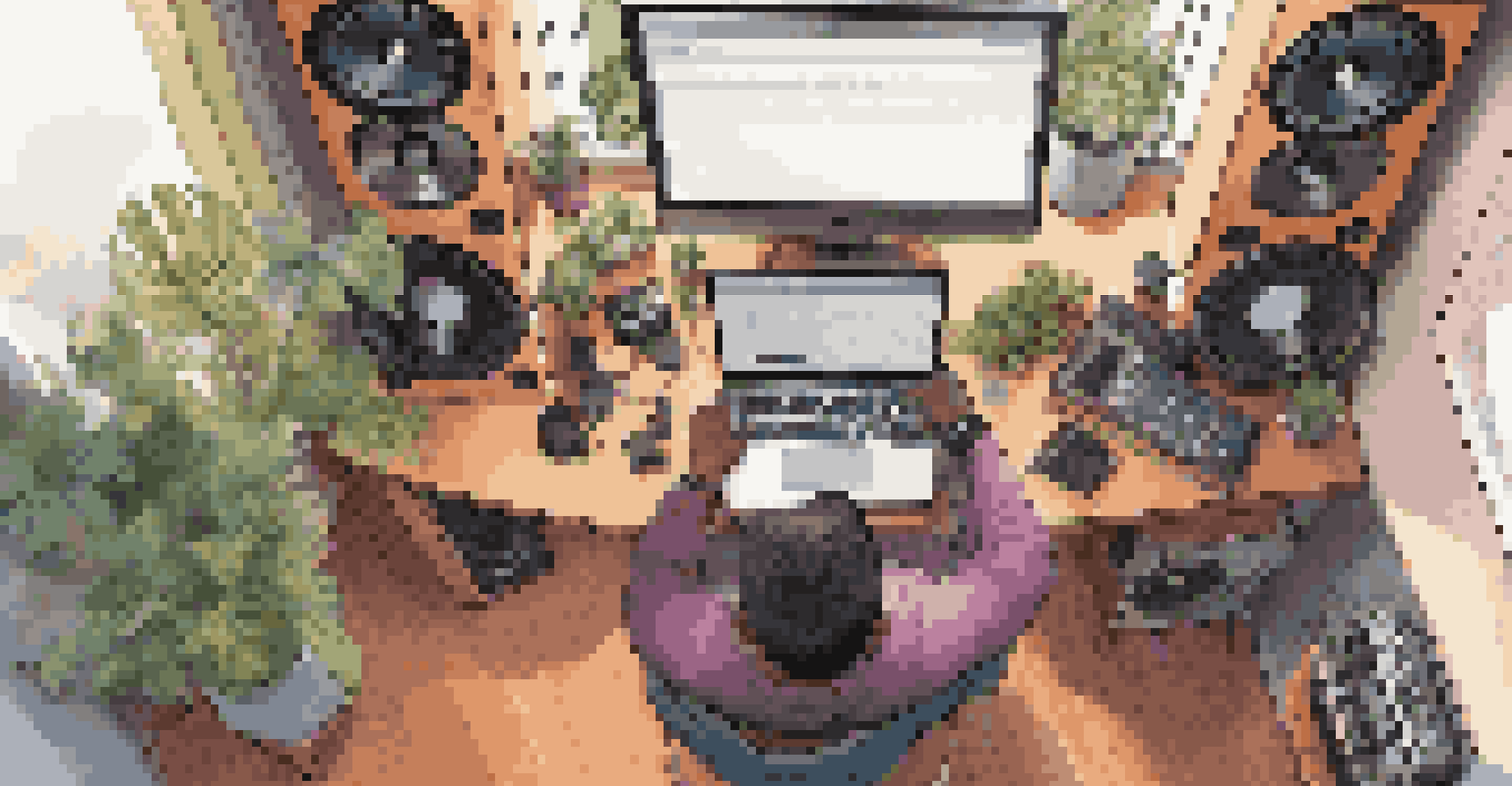Creating a Home DJ Setup: Essential Gear for Beginners

Understanding the Basics of DJ Equipment
Before diving into gear, it's important to understand what a DJ does. At its core, a DJ mixes music to create a seamless flow of sound, often manipulating tracks to keep the energy up on the dance floor. This involves blending different elements, matching beats, and adding effects to make the music come alive.
The first rule of mixing is to make your transitions as seamless as possible.
For beginners, the DJ setup can seem daunting, but it typically includes a mixer, turntables or CDJs, and speakers. Each component plays a vital role in the mixing process, allowing you to control sound levels, effects, and transitions between tracks. Understanding each piece will help you make informed decisions about what to buy.
As you explore your options, keep in mind that quality matters but so does budget. Starting simple with essential gear can help you learn the ropes without feeling overwhelmed. Once you get more comfortable, you can always upgrade your setup.
Choosing the Right Mixer for Your Setup
The mixer is the heart of your DJ setup, allowing you to control audio signals from different sources. For beginners, a basic two-channel mixer is often sufficient. This lets you connect two devices, such as a turntable and a laptop, making it easier to blend your tracks.

When selecting a mixer, consider features like built-in effects and EQ controls, which can enhance your mixing capabilities. Some mixers also offer USB connectivity, enabling you to connect directly to your computer for digital DJing. This can simplify your workflow and open up more creative possibilities.
Essentials of DJ Equipment Setup
A basic DJ setup typically includes a mixer, turntables or CDJs, and speakers, which are crucial for creating seamless music mixes.
Always look for a mixer that feels comfortable to use. If possible, try out different models at a music store to get a feel for their layout and functionality. Finding a mixer that resonates with you will make your DJing experience much more enjoyable.
Selecting the Best Turntables or CDJs
Turntables and CDJs serve as your primary playback devices, allowing you to manipulate tracks in real-time. If you’re into the traditional vinyl experience, turntables are a great choice. They offer a tactile, hands-on approach to mixing, which many DJs find rewarding.
You don't need a huge setup to be a great DJ; it's all about how you use what you have.
On the other hand, CDJs are digital counterparts that can play music from CDs or USB drives, offering greater flexibility with track selection. They also come with features like looping and hot cues, which can enhance your mixing possibilities. Consider what style resonates with you as you make your choice.
If you're just starting, you might want to consider an all-in-one controller that combines a mixer and decks into one device. This can simplify your setup and save space while still providing essential features for mixing music.
Investing in Quality Speakers and Headphones
Quality speakers and headphones are crucial for any DJ setup, as they impact how you hear your mixes. Good speakers will deliver a clear and powerful sound, allowing you to accurately judge your mixes and make necessary adjustments. Look for monitors that are designed for studio use, as they provide a more honest representation of your sound.
Headphones are equally important, especially for beatmatching and cueing tracks. A pair with good noise isolation will help you focus on your music, even in a noisy environment. Look for headphones that feel comfortable for extended use and have a good frequency response for accurate sound.
Choosing the Right Mixer Matters
Selecting a comfortable and feature-rich mixer is vital, especially for beginners, as it enhances the overall mixing experience.
As you explore your options, don’t overlook the importance of placement and acoustics in your space. Proper speaker positioning can make a significant difference in sound quality, so take some time to set up your area thoughtfully.
Exploring DJ Software for Mixing
DJ software is where the magic happens, allowing you to mix tracks digitally and manipulate sound in innovative ways. Popular options like Serato, Traktor, and Rekordbox offer a range of tools to help you blend tracks, apply effects, and even create playlists. Many of these programs also support various controllers, giving you a versatile DJ experience.
When selecting software, think about the features that are most important to you. Some programs offer advanced features like key detection and beatgrid editing, which can enhance your mixing capabilities. Others are more beginner-friendly, focusing on ease of use and essential functions.
Many DJ software options offer free trials, so don’t hesitate to test several programs before committing. Finding software that feels intuitive will help you learn and grow as a DJ.
Creating an Inviting DJ Space at Home
Setting up your DJ space at home can greatly influence your creativity and enjoyment. Aim for a dedicated area where you can focus on mixing without distractions. This could be a corner of your living room, a spare bedroom, or even a garage—just make sure it feels comfortable and inspiring.
Consider the layout of your equipment for optimal workflow. Keep your mixer, turntables, and other gear within reach, and ensure that your speakers are positioned to deliver the best sound. Adding personal touches like posters, lights, or plants can also make your space feel more inviting and motivate you to practice.
Creating Your DJ Space at Home
An inviting and well-organized DJ space at home can significantly boost your creativity and motivation to practice.
Lastly, don’t forget about lighting. Good lighting can set the mood for your mixing sessions and enhance your creativity. Whether it’s bright task lights for visibility or colorful LED strips for ambiance, find what works best for you.
Practicing and Developing Your DJ Skills
Once your setup is complete, it's time to practice! Start by familiarizing yourself with your gear and software. Experiment with different mixing techniques, such as beatmatching and crossfading, to understand how they work and how they can enhance your sets. The more you practice, the more comfortable you'll become.
Consider setting specific goals for your practice sessions, like learning a new technique or preparing a short mix. This not only keeps your practice focused but also gives you a sense of accomplishment as you progress. Record your mixes to track improvements and identify areas for growth.

Finally, don’t hesitate to seek feedback from friends or fellow DJs. Joining online communities or local DJ groups can provide valuable insights and inspiration. Remember, every great DJ started as a beginner—so embrace the journey!